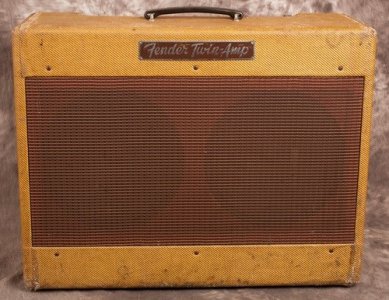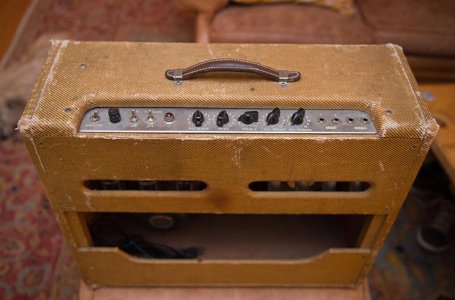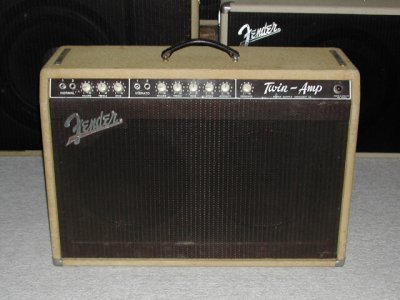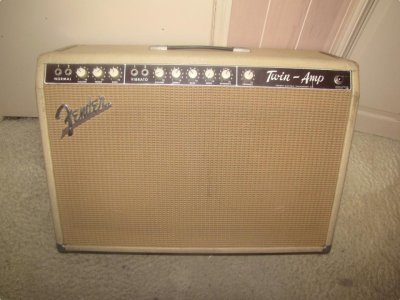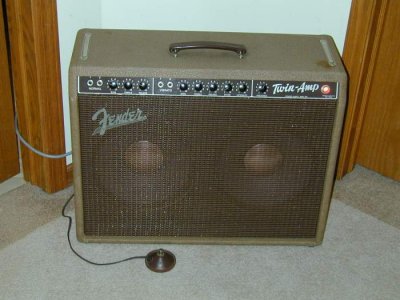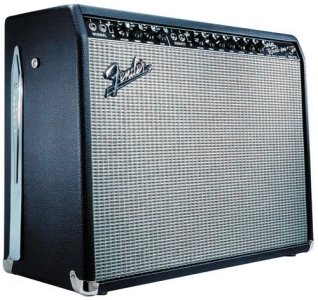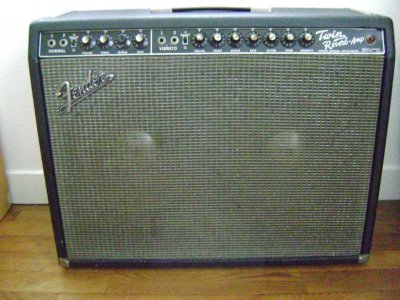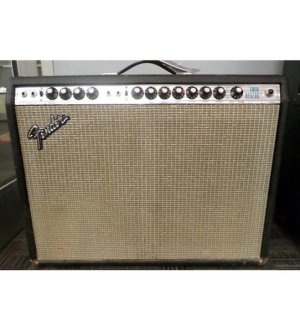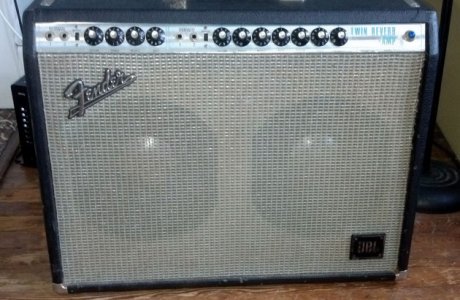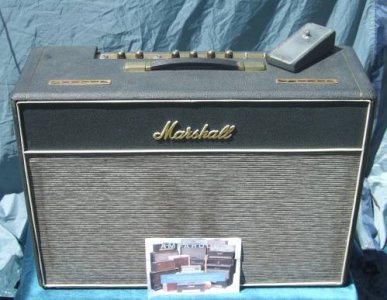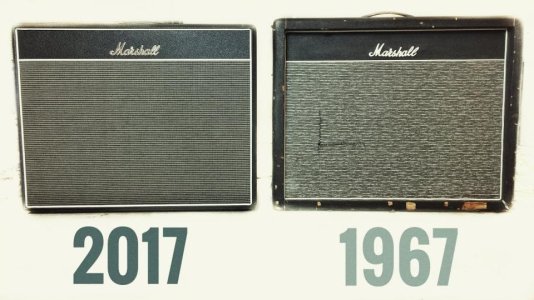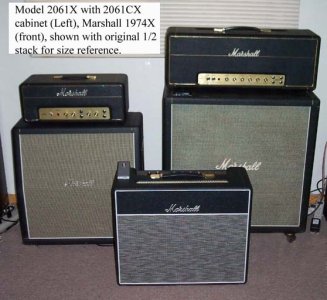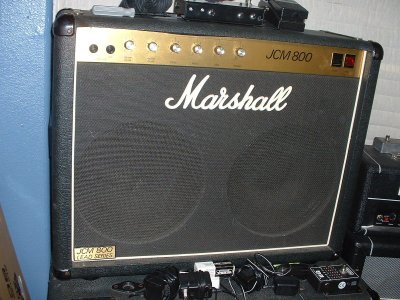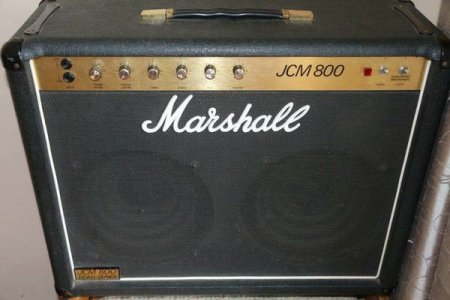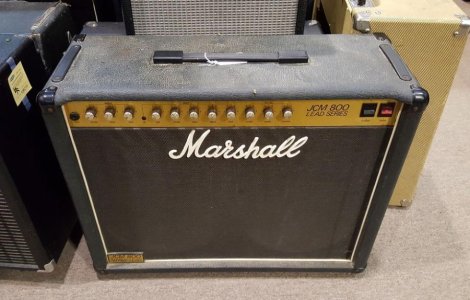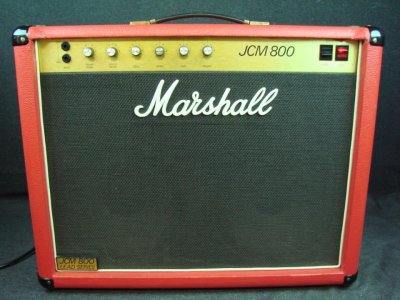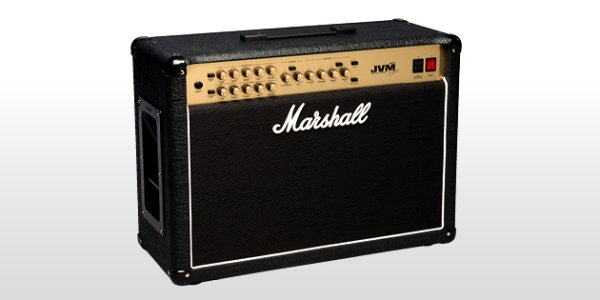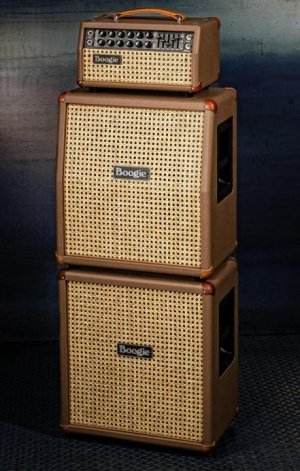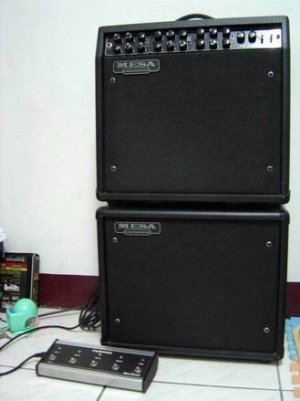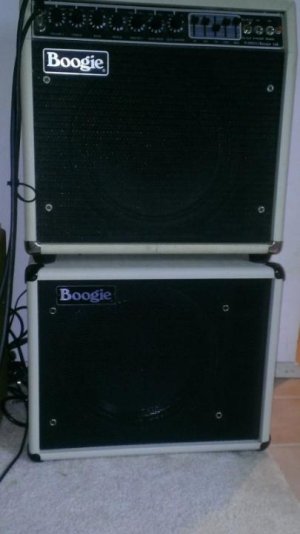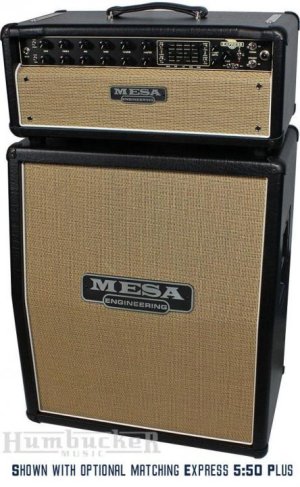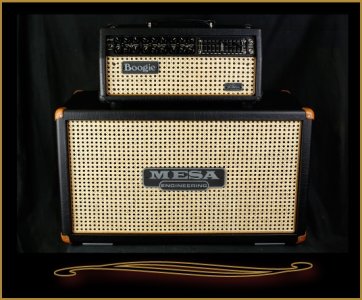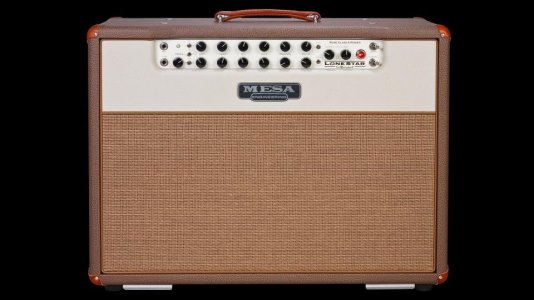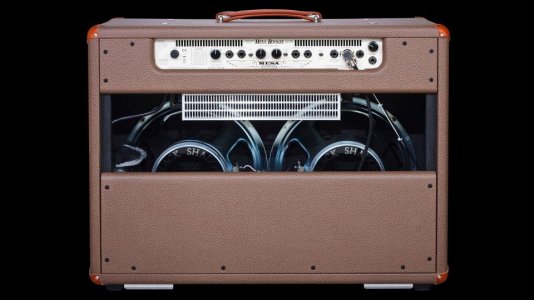I was thinking about the ubiquitous 2x12 set up. It seems a lot of people end up there. The 4x12 half stack certainly isn't going anywhere, and is still the go-to configuration for a lot of players, but the 2x12 has always had a strong following, too. I seem to notice that it's the favorite of a lot of the regulars on this forum.
Early on Fender built his powerful amps in both 4x10 and 2x12 combos. The 4x10's have always had a loyal following, but the 2x12 was the bread and butter go-to amp for a lot of people. In the 1970s the Twin Reverb (and it's competitors) was just *the* amp that people used, if they weren't using Marshall stacks. Where as even a full stack is a somewhat intimidating look (this band is gonna be loud and hard), the 2x12 just looks friendly and professional.
Blues, jazz, and country players all seem to prefer twins. A lot of rock players have gone through periods of using twins: Clapton is famous for the Beano-era Marshall Bluesbreaker, but also used Musicman 130 Twins, and now uses Fender Tweed Twin custom shop amps.
I tend to think of the original Mesa Boogie as the guys who popularized the 1x12 combo with a 1x12 extension cab. The original Mesa amps were small: lore has it they were based on a Princeton, and the extension cabs were small too. You ended up with the 2 x 12 format, but it was a little easier to move than a full on twin.
It seems like in the last few years the boutique brands and indy cab builders have done a lot to revitalize the Head + 2x12 extension cab format. This format has a long and storied past too. The first ones I can think of were Leo Fender's Blonde and Brownface era "Piggyback" Bassman, which had a horizontal 2x12 cab that the head sat on. The Fender Bandmaster was another from this era. More recently the vertical 2x12 has been the configuration of choice, often provided in "slant cab" format. Both open and closed (as well as convertible) versions from guys like Dr. Z. seem to be the new favorite for a lot of players who have owned everything, like the denizens of Amplifier Central.
The latest interesting variation of packaging of two twelves is the "Mini Stack", offered by Orange, Mesa and EVH, and enabled in part by the trend towards smaller "lunchbox" sized amps. A small head and two separate 1x12 cabs, sometimes with the top one being angled (looking) to create a mini Marshall stack effect. I've never actually seen one of these used in anger at a club, unlike the other formats which are all pretty common, but it's still a pretty new idea, so it's only a matter of time I suspect.
The percent of "open backed-ness" varies among these setups. Combos are always open-backed (at least that I've seen). The mini-stacks are always closed back, mimicking the big 4x12 full stacks accurately in that regard. The 2x12 cabinet is made in both configs, and convertable ones are available too, so what ever you prefer. And the most common format in the combo + extension cab is that the extension cab is closed (or closed and ported, as in the original Boogie design), which means the setup contains BOTH a open cab (the combo) for the open-ness thing, AND a closed cab, for the tighter bass response. (One reason some of you may vote for that as the best setup, I predict.)
No matter how you package it, the 2x12 is loved my many and hated by few. The reason no doubt starts with the 12" speaker: theere are a plethora of designs, including many very classic speakers like the Celestion Greenbacks, and Creambacks, more recent cult offerings like the Eminence Cannibas Rex, super-high power speakers, and super vintage low power reproductions. Replacing speakers in a 2x12 format set up is cheaper than replacing them in a cab, and many people like the results of mixed setups. 2x12 setups are a speaker tinkerer's dream.
The downsides are few. Not as loud as 4x12 half-stack, or a full stack but still plenty loud. (And, we are about 30 years into the the "House PA" era.) The classic Twin is the heaviest format of amp out there, excepting perhaps some heavily built 4x12 cabs. And even those are always a bit easier to move than the twin, given they usually have wheels on them. (I don't know about you but no way I'm going to roll anything with tubes across an asphalt parking lot.)
It is a the "player's choice" for a lot of musicians, and has been for 50 years. No matter how you like it packaged and delivered the two 12" speaker set-up is powerful, versatile, and reasonably compact and portable.
What's your choice? Post pictures if you got' em', and as always have fun and keep rockin'!
Early on Fender built his powerful amps in both 4x10 and 2x12 combos. The 4x10's have always had a loyal following, but the 2x12 was the bread and butter go-to amp for a lot of people. In the 1970s the Twin Reverb (and it's competitors) was just *the* amp that people used, if they weren't using Marshall stacks. Where as even a full stack is a somewhat intimidating look (this band is gonna be loud and hard), the 2x12 just looks friendly and professional.
Blues, jazz, and country players all seem to prefer twins. A lot of rock players have gone through periods of using twins: Clapton is famous for the Beano-era Marshall Bluesbreaker, but also used Musicman 130 Twins, and now uses Fender Tweed Twin custom shop amps.
I tend to think of the original Mesa Boogie as the guys who popularized the 1x12 combo with a 1x12 extension cab. The original Mesa amps were small: lore has it they were based on a Princeton, and the extension cabs were small too. You ended up with the 2 x 12 format, but it was a little easier to move than a full on twin.
It seems like in the last few years the boutique brands and indy cab builders have done a lot to revitalize the Head + 2x12 extension cab format. This format has a long and storied past too. The first ones I can think of were Leo Fender's Blonde and Brownface era "Piggyback" Bassman, which had a horizontal 2x12 cab that the head sat on. The Fender Bandmaster was another from this era. More recently the vertical 2x12 has been the configuration of choice, often provided in "slant cab" format. Both open and closed (as well as convertible) versions from guys like Dr. Z. seem to be the new favorite for a lot of players who have owned everything, like the denizens of Amplifier Central.
The latest interesting variation of packaging of two twelves is the "Mini Stack", offered by Orange, Mesa and EVH, and enabled in part by the trend towards smaller "lunchbox" sized amps. A small head and two separate 1x12 cabs, sometimes with the top one being angled (looking) to create a mini Marshall stack effect. I've never actually seen one of these used in anger at a club, unlike the other formats which are all pretty common, but it's still a pretty new idea, so it's only a matter of time I suspect.
The percent of "open backed-ness" varies among these setups. Combos are always open-backed (at least that I've seen). The mini-stacks are always closed back, mimicking the big 4x12 full stacks accurately in that regard. The 2x12 cabinet is made in both configs, and convertable ones are available too, so what ever you prefer. And the most common format in the combo + extension cab is that the extension cab is closed (or closed and ported, as in the original Boogie design), which means the setup contains BOTH a open cab (the combo) for the open-ness thing, AND a closed cab, for the tighter bass response. (One reason some of you may vote for that as the best setup, I predict.)
No matter how you package it, the 2x12 is loved my many and hated by few. The reason no doubt starts with the 12" speaker: theere are a plethora of designs, including many very classic speakers like the Celestion Greenbacks, and Creambacks, more recent cult offerings like the Eminence Cannibas Rex, super-high power speakers, and super vintage low power reproductions. Replacing speakers in a 2x12 format set up is cheaper than replacing them in a cab, and many people like the results of mixed setups. 2x12 setups are a speaker tinkerer's dream.
The downsides are few. Not as loud as 4x12 half-stack, or a full stack but still plenty loud. (And, we are about 30 years into the the "House PA" era.) The classic Twin is the heaviest format of amp out there, excepting perhaps some heavily built 4x12 cabs. And even those are always a bit easier to move than the twin, given they usually have wheels on them. (I don't know about you but no way I'm going to roll anything with tubes across an asphalt parking lot.)
It is a the "player's choice" for a lot of musicians, and has been for 50 years. No matter how you like it packaged and delivered the two 12" speaker set-up is powerful, versatile, and reasonably compact and portable.
What's your choice? Post pictures if you got' em', and as always have fun and keep rockin'!
Last edited:

